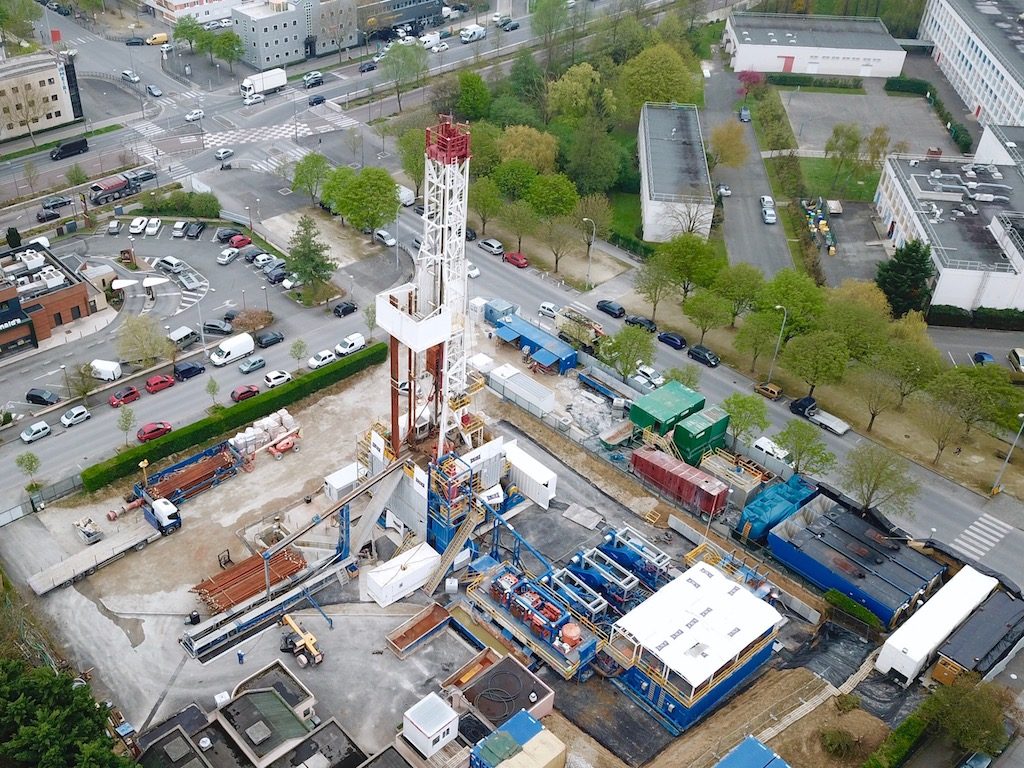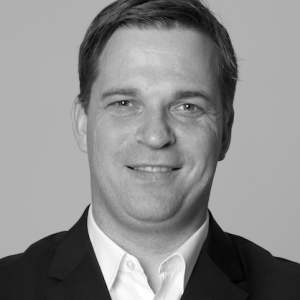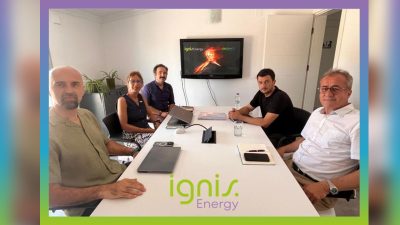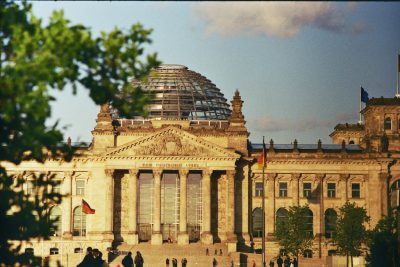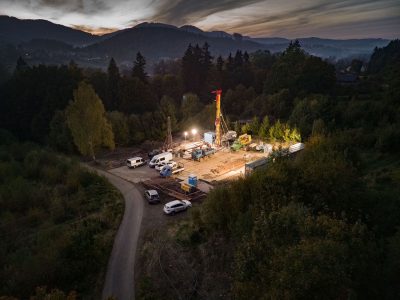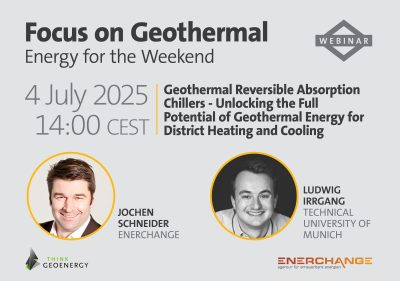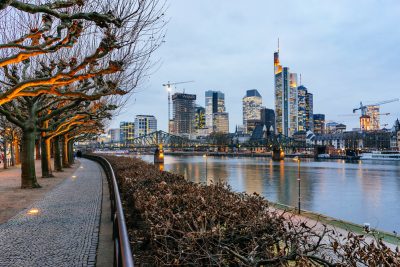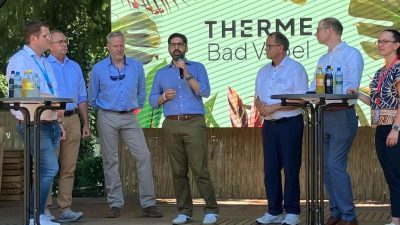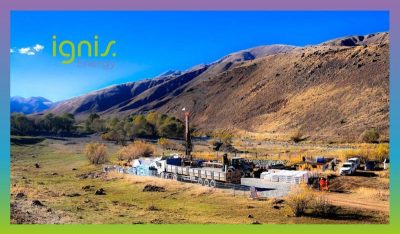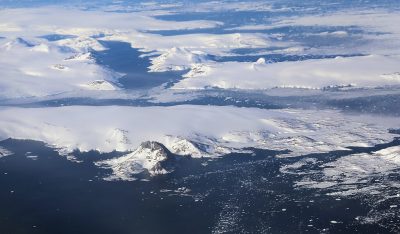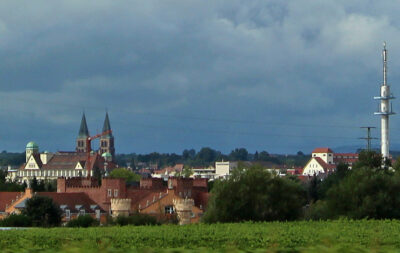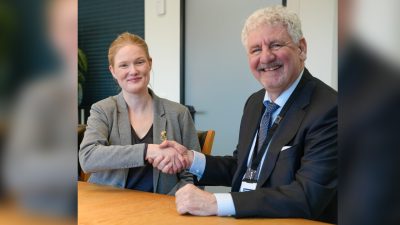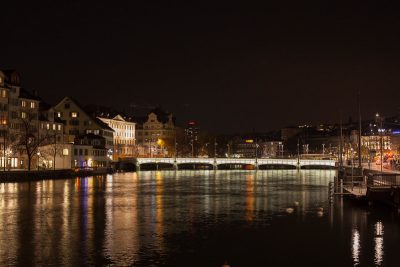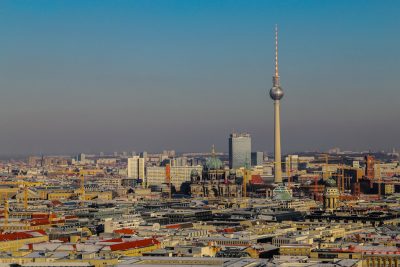Geothermal energy – source of heat, cold and electricity?
Geothermal energy has its place in the energy mix, since it overcomes the shortcomings of other renewable sources, mainly intermittent, such as wind or solar.
In an interesting article shared on its website, French energy group Engie describes geothermal energy as a local and inexhaustible resource, and a mature technology with low carbon emissions which makes it possible to produce heat but also cold and electricity.
Today, we are trying to make the best use of this resource, very low temperature geothermal energy, by exploiting shallow aquifers, to meet the heat and cooling needs of houses, buildings and even eco-districts.
For Cooling?
Indeed, thanks to heat pumps, geothermal energy can help produce renewable cold. With fluids reaching temperatures above 25 degrees C, geothermal energy is also suitable for the creation of more extensive district heating networks and even, for temperatures reaching 110 degrees C, for the production of electricity.
Besides its renewable nature, the undeniable advantage of geothermal energy is that it is always available. We speak of a “base load” energy, that is to say non-intermittent and therefore capable of providing the minimum required for a continuous electricity or heat network. Geothermal energy therefore has its place in the energy mix, since it overcomes the shortcomings of other renewable sources, mainly intermittent, such as wind or solar.
The French experience
Like Champs-sur-Marne, several cities in France have chosen to heat or cool their public buildings and collective dwellings from this energy source. For this, an urban network is made up of one or more heat production plants, which is then distributed to users via underground networks which can travel through the city for several kilometers.
A typical geothermal power plant combines the heat production well and the water reinjection well within the aquifer from which it was drawn, as well as surface heat exchangers to transfer heat to the clean water network which supplies the buildings with heating and domestic hot water (see figure opposite). Water from the depths therefore does not circulate in the pipes!
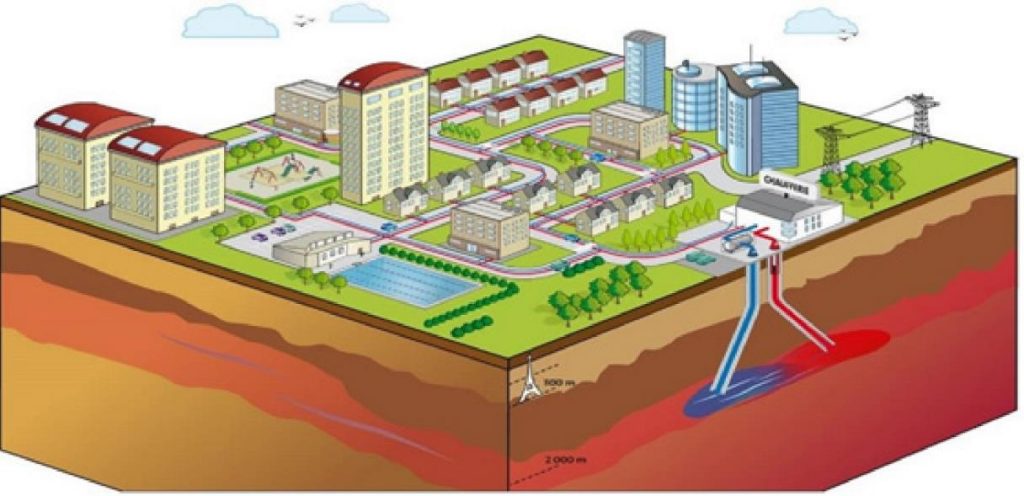
In a geothermal power plant, water (in red) captured in the transmits its heat to a distribution network (in the boiler room) before being reinjected (in blue) (picture: Engie)
Île-de-France and more particularly Val-de-Marne have bet on urban geothermal energy.
In this department (region) one finds the highest density of geothermal plants in operation in the world. Geothermal as source of energy represents more than one third of the heat production thanks to some twenty individual district heating networks. This is because the area benefits from the Dogger aquifer (see the figure below) buried at a depth of 1.7 kilometers and its particularly favorable properties here from a hydrodynamic point of view. The water temperature is between 60 and 75 degrees C. Well doublets make it possible both to take hot water and then to reinject it into the Dogger once its calories have been transmitted to the heating water in the heat exchanger, for powers of 10 to 20 MW.
With its waters of 50 to 85 ° C, the Dogger aquifer, between 1,500 and 2,000 meters deep, is an invaluable geothermal resource in Île-de-France .
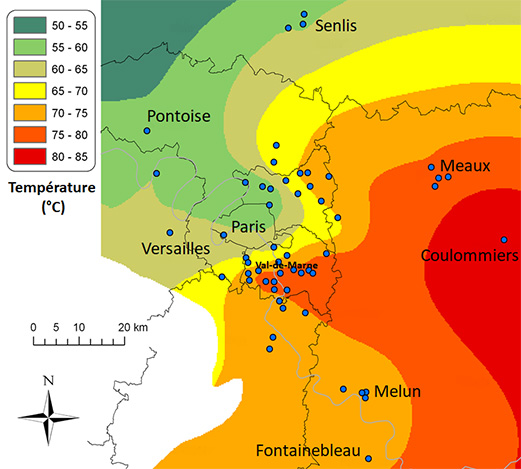
In Île-de-France, geothermal activity began after the first oil shock, between 1975 and 1986, and experienced renewed interest after 2010, in particular thanks to the support of ADEME [1], which promotes energetic transition. The growth is continuous, and the French multiannual energy program (PPE), created by the law on energy transition for green growth, provides for a doubling of the production of renewable heat from geothermal energy for cities and towns by 2028. [1] French Environment and Energy Management Agency
In this context, ENGIE has developed ten new geothermal power plants over the past ten years, the most recent of which are installed, in addition to Champs-sur-Marne, Vélizy and Bordeaux. In the latter city, the project is particularly innovative. The idea was to explore the Jurassic formation, about 1.7 kilometers deep, whose geothermal potential was unknown (it is in fact zero, because the formation is not aquifer), while having, by the same well, a fallback solution, in this case a Cretaceous aquifer, 900 meters deep and whose resources are known. Of course, in the end we have less energy than hoped for, because it is shallower, but it is guaranteed.
In addition to these new installations, there is the renovation of around forty geothermal power plants commissioned in the 1980s. In total, France has around one hundred installations of this type, including 50 in Île-de-France. . Such a density gives French industry a unique know-how that can be exported as the geothermal potential is present in Europe.
Geothermal electricity
Geothermal energy provides hot and cold, but also electricity. Italy was a pioneer in this field, from 1913, and in particular Tuscany, a region with very favorable geological characteristics: a thinned earth crust and significant magmatism explain a high geothermal gradient, of the order of 100 degrees C per kilometer. . The first plant, in Larderello, had an initial capacity of 20 kilowatts: today it is over 800 MW.
In the 20th century, the development of the resource in the most favorable regions of the globe made geothermal energy a leading energy. The most recent scientific and technical progress would even offer the possibility of extracting lithium from certain geothermal waters for electric mobility applications. ENGIE is participating in this research with its academic and institutional partners, by designing and testing with its academic and institutional partners technologies for imaging underground vapor zones and gas reinjection] and non-condensable gas reinjection.
Global installed geothermal electricity production capacities in 2020 were 15.9 gigawatts (the equivalent of 16 nuclear reactors), or less than 1% of total production. Currently implemented by 29 countries with generous and obvious geothermal resources, the development potential is significant.
Abroad, ENGIE and its partners recently put into production the Murah Laboh geothermal power plant in Indonesia (with an electrical capacity of 85 MW). In France, the objective is to look to new regions in metropolitan France and overseas in order to conduct the geoscience studies prior to any project.
Ultimately, through the development of urban heating and cooling networks, as well as the production of electricity based on geothermal resources, the ambition is to participate fully in the development of an energy mix at low carbon emissions.
GECO: a EU research program to reduce greenhouse gas emissions from geothermal energy production
Storengy is participating in the GECO (Geothermal Emission Control) project , a European project with 9 partner countries, aimed at developing techniques for reducing greenhouse gas emissions from geothermal power plants. As part of GECO, Storengy is developing a test unit to demonstrate the feasibility of the total reinjection of non-condensable gases (NCG) in a high temperature well (> 200 degrees C).
Storengy is working with the Iceland GeoSurvey (ISOR) to implement a closed-loop demonstration test unit and specific well completion. This reinjection pilot will be tested at Hveragerdi (Iceland).
In addition to the progress that leads to the total control of emissions in geothermal energy, this technological development will allow, on the one hand, a better acceptability of electric geothermal projects because it allows a harmonious integration into the landscapes, and will also benefit production thanks to the maintaining the pressure in the tank being operated.
This project has received funding from the European Union’s Horizon 2020 research and innovation program under grant agreement No 818169.
This article has been written by
- Delphine PATRIARCHE – R&D Key Expert Storengy – Head of ENGIE’s GeoEnergy Lab program
- Olivier RACLE – Director District Heating & Cooling Solutions – ENGIE
- Nicolas MONNEYRON – Geothermal Global Expert – ENGIE
Source: Engie
